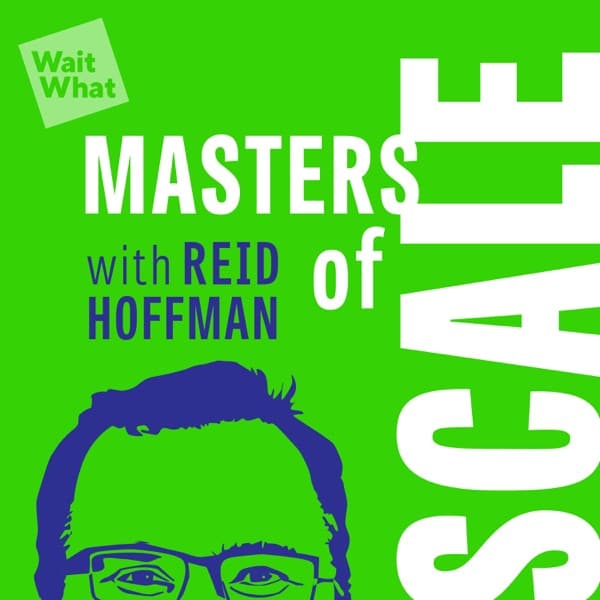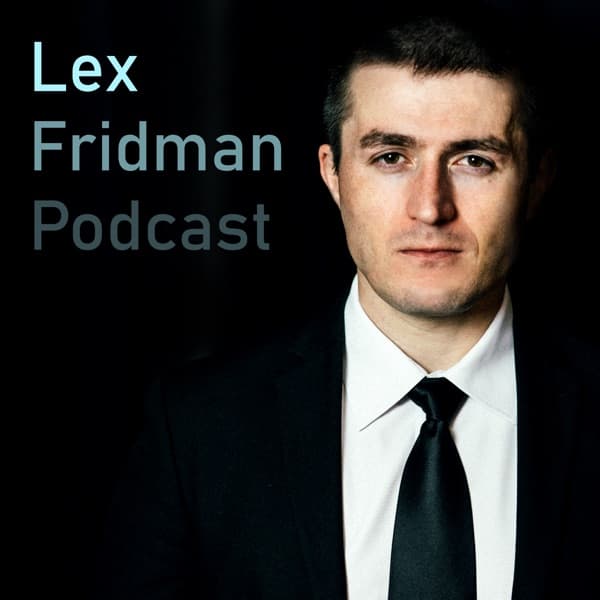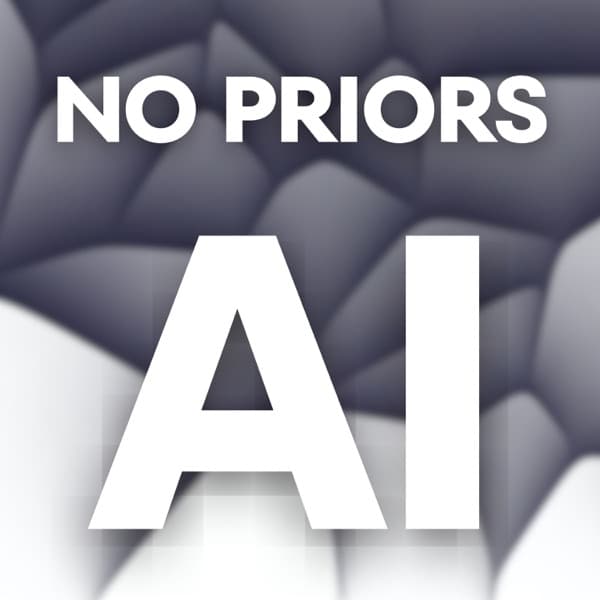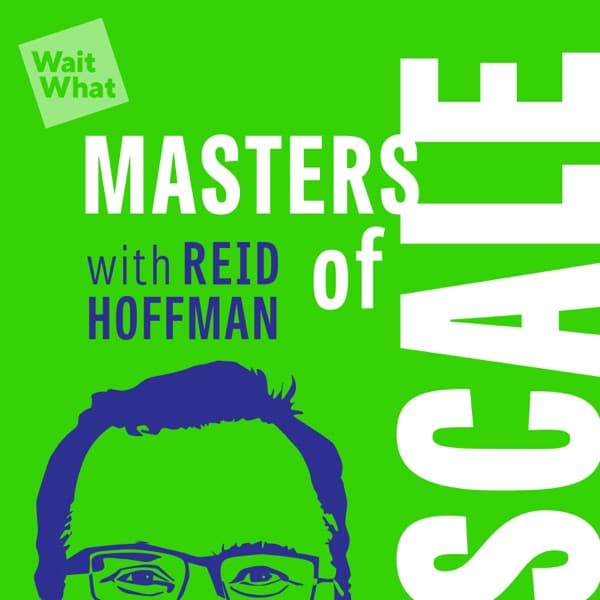a16z: MasterCard is leveraging AI to enhance fraud detection, personalization, and operational efficiency, focusing on generative AI for new opportunities.
TechCrunch: The episode discusses the intersection of space and solar energy, focusing on Aetherflux's plan to use satellites to collect solar power and beam it to Earth.
OpenAI: AI can enhance fishing by providing detailed, accurate information on techniques and locations.
OpenAI: A father uses a custom AI math tutor to help his daughter improve her math skills, resulting in significant progress.
The Twenty Minute VC (20VC): Venture Capital | Startup Funding | The Pitch: Max Levchin discusses the importance of hiring brilliant people with extreme personalities and the value of opinionated team members.
BG2Pod with Brad Gerstner and Bill Gurley: The discussion centers on globalism, open-source AI models, and economic policies like tariffs, emphasizing the need for innovation and strategic economic decisions.
TechCrunch Startup News: Wabi partners with Volvo to develop autonomous trucks, aiming for a commercial launch by 2025.
TechCrunch Startup News: AI agents are transforming the potential for one-person billion-dollar companies by automating tasks and enhancing productivity, though human relationships remain crucial for business success.
a16z - How AI is Powering Payments, with Greg Ulrich of Mastercard
MasterCard has been utilizing AI for decades, primarily in fraud detection and transaction security. With the advent of generative AI, the company is exploring new applications such as digital onboarding assistants and enhanced fraud capabilities. Greg, the Chief AI and Data Officer, outlines four key areas of focus: making the ecosystem safer, smarter, more personal, and stronger. Safer involves improving fraud detection and identifying scams. Smarter focuses on optimizing transaction routing and providing insights to partners. More personal aims to help partners personalize offerings for consumers. Stronger is about enhancing internal operations and employee productivity. MasterCard is also committed to safeguarding data and partnering with early-stage companies that align with their values. They use a hub-and-spoke model to coordinate AI initiatives across the organization, ensuring efficient innovation and governance. The company is excited about the potential of multimodal AI and reasoning models, which could revolutionize financial services by integrating various data types for a single source of truth.
Key Points:
- MasterCard uses AI for fraud detection, personalization, and operational efficiency.
- Generative AI is being applied to create digital assistants and enhance fraud capabilities.
- The company focuses on making the ecosystem safer, smarter, more personal, and stronger.
- MasterCard partners with early-stage companies and uses a hub-and-spoke model for AI initiatives.
- Excitement around multimodal AI and reasoning models for integrating diverse data types.
Details:
1. 📜 Financial Services & AI Introduction
1.1. AI in Financial Document Processing
1.2. Holistic Data Analysis with AI
2. 🧑💼 Greg's AI Journey and Insights
- Greg is the Chief AI and Data Officer at MasterCard, highlighting the dynamic nature of AI and the potential for innovation in this field.
- Greg's journey in AI began in the nonprofit sector, focusing on evaluating the efficacy of interventions like clean water and malaria initiatives.
- He recognized limitations in data and analytics within the nonprofit sector, which led him to work at Applied Predictive Technologies, enhancing his understanding of causality and correlation.
- At Applied Predictive Technologies, Greg learned the importance of having the right data and analytics to measure impact accurately and the risks of data misuse.
- After Applied Predictive Technologies was acquired by MasterCard, Greg took on various roles in MasterCard's services division, eventually leading strategy, M&A, and Corporate Development.
- Greg was later appointed as the Chief AI and Data Officer at MasterCard, tasked with leveraging AI to drive strategic growth and innovation.
3. 🤖 MasterCard's AI Evolution
3.1. Traditional AI Applications at MasterCard
3.2. Generative AI Applications at MasterCard
4. 🔍 Generative AI Innovations
- MasterCard has implemented two early applications of generative AI: a digital onboarding assistant and advanced fraud detection capabilities.
- The digital onboarding assistant aims to streamline customer onboarding, reducing the time required for new users to start using services.
- Advanced fraud detection capabilities leverage generative AI to achieve higher accuracy, showing a significant improvement over traditional machine learning approaches, thus enhancing transaction security.
- These applications were chosen for their ability to transform customer interactions and bolster security measures, demonstrating a strategic focus on innovation and customer satisfaction.
5. 💡 AI in Fraud & Personalization
5.1. AI in Fraud Management
5.2. AI in Personalization
6. 🛠️ Digital Assistants & Customer Engagement
- MasterCard has developed a digital assistant to facilitate the integration of its products by banks and merchants.
- The digital assistant automates manual tasks, speeding up the onboarding process for MasterCard products.
- Technical specifications and Q&As are centralized, allowing faster response times to customer inquiries.
- The system includes a human in the loop, directing the digital assistant towards agents, which reduces customer onboarding time and enhances value extraction from MasterCard products.
7. 🤝 Collaborating with Startups
7.1. Challenges and Importance of Data Security
7.2. Building and Maintaining Trust
7.3. Shared Values and Ecosystem Functionality
8. 🗣️ AI Strategy Across MasterCard
8.1. AI Enhancements and Strategic Implementations
8.2. Strategic Partnerships and Collaborations
9. 🔄 Evaluating AI Impact and Returns
9.1. AI Strategy and Organizational Structure
9.2. Benefits of the Hub-and-Spoke Model
10. 🌐 Keeping Up with AI Trends
10.1. KPIs and Success Measurement for AI Initiatives
10.2. Impact on Stakeholders and Resource Allocation
11. 🏛️ AI's Hub-and-Spoke Structure
11.1. Internal Strategies for AI Implementation
11.2. External Engagement for AI Development
12. 🔍 AI Adoption & Trust Building
- MasterCard operates at the intersection of issuing banks, acquiring banks, and processors, observing mixed reactions towards AI adoption.
- There is significant concern in regulated industries about AI accuracy and potential hallucinations, affecting customer-facing applications.
- To mitigate risks, organizations employ a 'human in the loop' approach or initially use AI internally before consumer deployment.
- While some are early adopters, many await proven enhancements in AI models regarding accuracy, speed, latency, and cost.
- Continuous AI technology improvements are fostering a cautious yet optimistic adoption approach.
13. 🚀 Future AI Directions at MasterCard
13.1. AI Model Interaction and Multimodality
13.2. Trust and Responsibility in AI
13.3. Data Utilization and Differentiation
TechCrunch - From fintech to space tech: Robinhood co-founder Baiju Bhatt is betting on space solar
The podcast features Beu Bot, co-founder of Robinhood and founder of Aetherflux, a startup aiming to revolutionize energy by using satellites to collect solar power in space and beam it to Earth using infrared lasers. This concept, inspired by a NASA idea from the 1970s, offers continuous solar power unaffected by weather or nightfall. Aetherflux plans to use commercially available components to quickly demonstrate this technology, targeting a space demonstration next year. The startup envisions a constellation of satellites providing power to remote locations, military bases, and potentially AI data centers. The approach leverages advancements in technology and manufacturing to reduce costs and time, aiming to create a decentralized energy grid in space. The discussion also touches on the potential for space as a commercial platform, akin to mobile platforms for financial services, and the role of American capitalism in driving innovation in space.
Key Points:
- Aetherflux aims to collect solar power in space using satellites and beam it to Earth, providing continuous energy.
- The startup plans to use commercially available components to quickly demonstrate the technology, with a space test next year.
- Potential applications include powering remote locations, military bases, and AI data centers.
- The approach leverages advancements in technology to reduce costs and time, aiming for a decentralized energy grid in space.
- The discussion highlights space as a commercial platform and the role of American capitalism in driving innovation.
Details:
1. 🎙️ Episode Introduction: Welcome to Equity!
1.1. Episode Introduction
1.2. Sponsorship Details: Invest Puerto Rico
2. 🌟 Spotlight on Space and Solar: Emerging Trends
- The episode focuses on emerging trends in the space and solar industries.
- Industry experts are brought in to provide insights into these trends.
- The discussion aims to highlight key developments in technology related to startups.
- Specific trends discussed include advancements in solar panel efficiency and reusable rocket technology.
- The purpose is to explore how these advancements can drive innovation and growth in the industry.
3. 🚀 Aetherflux: Bridging Space and Renewable Energy
- Aetherflux aims to integrate commercial space advancements with renewable energy demand, addressing the growing interest in these sectors.
- The company is leveraging 'Tailwinds' from both the space and renewable energy industries, indicating strategic market positioning.
- Beu Bot, former co-founder of Robin Hood, is involved, suggesting experienced leadership guiding the company.
- Specific technologies or strategies being used by Aetherflux include [details needed for completeness].
- The leadership team is composed of individuals with a background in both space and energy sectors, contributing to a comprehensive approach.
- Aetherflux is capitalizing on the market opportunity created by the convergence of space and solar industries.
4. 👨🚀 Beu Bot's Journey from Fintech to Space Tech
4.1. Motivations and Inspirations for Transition
4.2. Challenges and Strategic Steps in Transition
5. 🔋 Pioneering Space-Based Solar Power with Satellites
- The speaker grew up in an environment steeped in the space industry, with a family background in physics and NASA, influencing their passion for space exploration.
- Interest in commercial space development was rekindled with the idea of pioneering projects like space-based solar power.
- Educational background includes undergraduate studies in Physics at Stanford, which led to entrepreneurial ventures such as founding Robin Hood.
- The narrative illustrates a personal journey from a small town in India to engaging with significant technological and scientific advancements, showcasing the potential for large-scale space-based energy solutions.
6. 🛰️ Overcoming Technical Challenges in Space Energy
- A planned initiative aims to launch a constellation of satellites to collect solar power in low Earth orbit and transmit it to Earth using infrared lasers, potentially revolutionizing energy access.
- This approach revives a concept initially proposed by NASA and the Department of Energy in the 1970s, demonstrating significant advancements in technology and feasibility.
- Technical challenges include the development of efficient laser transmission systems and the safe integration of this energy into existing power grids.
- The initiative could drastically reduce reliance on terrestrial power sources, providing a consistent and clean energy supply.
- Successful implementation could lead to a 45% increase in renewable energy capacity, aligning with global sustainability goals.
7. 📈 Market Strategy: Targeting Remote and Tactical Applications
- Collecting solar power in orbit provides continuous exposure to sunlight, offering a strategic advantage over terrestrial solar power, which is limited by the day-night cycle.
- Orbit-based solar power can supply nearly uninterrupted power to ground locations, overcoming terrestrial limitations and presenting a unique selling point for market strategies focused on reliability and sustainability.
- Originally envisioned by NASA in the 1970s, orbit-based solar power has not yet become mainstream, but its potential to revolutionize energy supply strategies for remote and tactical applications remains significant.
- Current challenges in implementing this technology include cost and infrastructure development, but advancements could lead to significant market opportunities.
- Leveraging orbit-based solar power in market strategies could differentiate companies by offering innovative and sustainable energy solutions for off-grid applications.
8. 🌌 Making Space Solar Power a Reality: A Bold Vision
- The project aims to utilize technological advancements from the past 30-50 years, focusing on commercially available components that require minimal modifications for the space solar power system.
- The strategy involves deploying a large constellation of satellites designed to collect solar energy and beam it to ground stations, effectively increasing energy capacity with each satellite added to the network.
- The vision includes establishing a significant American energy grid in orbit, with the goal of becoming a leading American energy company.
- Challenges include integrating these technologies into existing infrastructure and ensuring consistent energy transmission. Solutions being explored involve advanced materials and energy conversion techniques.
- The project represents a shift towards renewable energy sources and aims to reduce dependency on traditional energy grids by harnessing space-based solar power.
9. 🔬 Testing and Development: From Lab to Orbit
- The initiative of delivering solar power from space aims to overcome terrestrial weather limitations and optimize satellite positioning for enhanced light capture, reducing the need for extensive land use.
- Space deployment presents significant challenges due to high costs and timelines, necessitating the use of off-the-shelf parts to streamline scaling and testing processes.
- Initial laboratory tests have commenced, focusing on validating the feasibility of the technology, and serve as a foundational step towards larger-scale demonstrations.
10. 👥 Building a Versatile Team with Innovative Approaches
- The company prioritized rapid deployment by starting full-time operations shortly after leaving Robin Hood, demonstrating a capability to quickly mobilize and execute plans.
- A strategic decision was made to utilize existing technology components rather than create new ones, allowing for faster deployment of the first satellite and meeting tight deadlines.
- The team includes members from Anduril, who bring expertise in using off-the-shelf technology, demonstrating a successful model of integrating standard components to pioneer advanced tech solutions.
11. 📡 Tactical Advantages of Space-Based Energy Transmission
11.1. Innovations in Space-Based Energy Transmission
11.2. Tactical Advantages of Innovative Approaches
12. 🌐 Competitive Landscape: Paving the Way in Space Commerce
- Experiments are being conducted to assess the impact of atmospheric conditions on power transmission and system performance, with a focus on varying weather conditions to ensure reliability.
- Various photovoltaics components are being tested with different light frequencies to understand their performance across the full spectrum, aiming to optimize energy capture and efficiency.
- A ground-based iterative testing approach is being implemented to fine-tune technologies before deployment, ensuring readiness for real-world applications.
- The go-to-market strategy involves leveraging renewable energy sources, such as solar power, to cater to data-intensive applications, particularly for AI companies that require large power supplies.
- AI companies are identified as primary customers due to their need for powering data centers, highlighting a strategic focus on this sector.
- The initial market focus is on providing power solutions to remote or hard-to-reach areas, meeting the growing demand in AI-driven applications and ensuring accessibility in challenging locations.
- The strategy anticipates addressing specific power-related problems within the first couple of years by integrating this technology into existing infrastructure, providing immediate benefits and solutions.
13. 🚀 Future Prospects: Expanding Beyond Traditional Space Use
13.1. Military and Strategic Applications
13.2. Civilian and Environmental Applications
14. 💡 Opportunities and Challenges in the Space Ecosystem
14.1. Innovative Power Solutions
14.2. Puerto Rico as an Innovation Hub
14.3. Funding, Technology Development, and Competitive Landscape
14.4. Space as a Commercial Platform
15. 🌠 Closing Insights and Future Demonstrations
- American capitalism is pivotal for accelerating space exploration and commercialization, driving innovation and progress.
- Transitioning space from a government-dominated sector to a commercial one opens new opportunities for entrepreneurs and industries, encouraging a new generation in aerospace engineering, akin to the rise of computer engineering.
- Commercial space activities are expected to diversify, potentially including industries beyond telecommunications, such as energy, creating a broader economic ecosystem.
- The speaker advocates for innovative thinking and exploring novel applications in space, beyond traditional uses.
- Security clearances are necessary for some space company roles due to national security, but the speaker's company, still in the tech phase, hasn't faced this yet.
- A future demonstration of the company's technology is planned at a creative event, similar to Burning Man, focusing on safe and innovative installations.
OpenAI - Fishing for first timers
The speaker, Adam Enino, shares his experience of using AI to improve his fishing skills. Despite being an experienced fisherman, he found that AI, specifically chat GPT, provided him with detailed and accurate information about fishing techniques, baits, and locations that would typically take years to learn through trial and error. For example, AI suggested productive fishing spots in the Bay Area, such as the Berkeley Flats and Paradise K, and offered advice on using live bait and jigs. This information significantly reduced the guesswork involved in fishing, allowing Adam to focus on practical application. He emphasizes that even when fishing trips don't result in catches, they still offer learning opportunities, and AI can be a valuable tool in enhancing this learning process.
Key Points:
- AI provides detailed and accurate fishing information, reducing learning time.
- Chat GPT can suggest effective baits, water depths, and fishing spots.
- AI can identify productive locations like Berkeley Flats and Paradise K in California.
- Using AI tools can cut down guesswork in fishing, enhancing efficiency.
- Fishing trips are learning experiences, and AI can enhance this learning.
Details:
1. 🎣 Fishing and AI: A New Approach
- AI technologies automate fish detection and tracking, significantly reducing the time spent searching for fish, leading to more efficient fishing operations.
- By implementing AI, the fishing industry could potentially see increased catch rates, although specific metrics are not detailed in this segment.
- The shift from traditional fishing methods to AI-driven approaches represents a significant change in the industry, offering opportunities for increased productivity and sustainability.
- Examples of AI application in other industries, such as agriculture, suggest that similar technologies could provide actionable insights and operational efficiencies in fishing as well.
- Exploring specific AI tools, like machine learning algorithms for fish behavior prediction, could provide practical implementation strategies for the fishing industry.
- Case studies from related fields could help in understanding the tangible benefits AI brings, such as improved resource management and reduced environmental impact.
2. 👨👦 A Journey with Fishing: From Family to Passion
- Adam Enino has been fishing since childhood, indicating a long-term engagement in the activity.
- His father played a pivotal role, taking him fishing almost every weekend, which emphasizes the importance of mentorship and consistent practice in skill acquisition.
- Fishing trips were not only about catching fish but also about learning and adapting, as every outing provided new insights or lessons.
- Adam mentions the importance of learning from unsuccessful fishing attempts, highlighting the value of understanding what doesn't work as part of skill development.
3. 🤔 The Curiosity of AI's Fishing Knowledge
- Fishermen often keep their knowledge and secrets closely guarded, highlighting the traditional nature of the craft.
- The use of AI tools like ChatGPT raises curiosity about the breadth and depth of knowledge they can provide in specialized fields such as fishing.
- AI's knowledge is broad but may lack the nuanced, experiential insights held by seasoned fishermen, who rely on generations of passed-down wisdom.
- Examples of AI applications in fishing include predicting fish movement using data analytics and optimizing fishing routes based on environmental conditions.
- While AI can assist in certain aspects, it may not fully replicate the intuition and experience of traditional fishermen.
4. 🔍 Unveiling AI's Detailed Fishing Insights
- AI revolutionizes fishing by offering precise insights into effective fishing techniques, such as optimal bait selection and water depths, traditionally obtained through years of experience.
- In the California Bay Area, AI pinpoints top fishing locations including Berkeley Flats, Paradise K, and the South Bay, enhancing catch rates through data-driven recommendations.
- Utilizing AI, anglers can maximize success with methods like drifting live bait or jigging at the bottom, tailored to specific conditions in identified hotspots.
5. 🦀 Successful Crabbing in the Bay Area with AI's Help
- AI tools significantly enhance crabbing efficiency and success rates in the Bay Area by analyzing data to identify optimal locations and times for crabbing.
- AI-driven analysis increases the likelihood of catching keeper crabs, thus improving yield and reducing time spent on unsuccessful attempts.
- Specific AI applications help distinguish between keeper and non-keeper crabs, ensuring compliance with regulations and enhancing operational efficiency.
- Integrating AI technology allows crabbing operations to focus efforts on high-probability areas, leading to higher productivity and yield.
6. 💡 Embracing AI for Fishing Mastery
- AI tools significantly reduce guesswork in fishing by analyzing environmental data and fish behavior, leading to smarter decision-making and improved catch rates.
- Adopting AI technology in fishing allows for precise location tracking and environmental monitoring, ultimately increasing efficiency and success.
- Continuous engagement in fishing activities, coupled with AI insights, fosters learning and mastery over time, even when immediate results are not apparent.
OpenAI - My dog, the math tutor
Phil, a father from Didsbury, Manchester, noticed his daughter Daisy was struggling with math at her primary school. Despite her excelling in other subjects, math was a challenge. Inspired by the capabilities of AI, Phil created a custom GPT-based math tutor named Izzy, modeled after their family dog. This personalized tutor presented math problems in a fun and engaging way, such as dividing dog biscuits among friends, making learning more relatable and enjoyable for Daisy. As a result, Daisy improved significantly in math, evidenced by her success in her SAT exams and positive feedback from her teacher. This approach not only helped Daisy academically but also empowered Phil as a parent to integrate family interests into learning.
Key Points:
- Custom AI tutor Izzy helped Daisy improve in math.
- AI made learning engaging by using relatable examples.
- Daisy's math skills improved, shown by SAT success.
- Phil felt empowered as a parent using AI for education.
- Personalized learning can integrate family interests.
Details:
1. 🏠 Meet the Family
- The AI Mass tutor is limited in performing tasks that require creativity or humor, such as generating dog jokes, highlighting the challenges AI faces in understanding and mimicking human humor.
- AI Mass tutor's strength lies in structured tasks and data-driven analyses, but it struggles with tasks that require emotional intelligence or nuanced understanding.
- The AI's limitations underscore the importance of human oversight in tasks involving creativity or emotional context, ensuring that AI remains a tool rather than a replacement for human input.
- Future improvements could focus on enhancing AI's ability to interpret context and emotion, potentially expanding its capabilities in creative fields.
2. 📚 Daisy's Math Journey
- Daisy is performing well in most subjects, but she is struggling specifically with math, which is causing concern for her parent.
- The primary math challenges Daisy faces include difficulties with multiplying fractions and performing long division.
- CH GPT was explored as a potential tool to assist Daisy, indicating the possible benefits of integrating AI technology into her learning process to enhance her understanding and performance in math.
- AI assistance like CH GPT could provide personalized tutoring, adaptive learning experiences, and immediate feedback, which are pivotal in overcoming specific learning obstacles.
3. 🐶 Introducing Izzy, the Math Tutor
- Daisy is characterized as a bright and humorous child with a love for animals and baking, which is leveraged in her learning process.
- A personalized GPT model named 'Izzy' has been developed specifically as a math tutor for Daisy, making use of her unique interests.
- Izzy has a visual representation of a studious Cocker Spaniel, tapping into Daisy's fondness for dogs to create an engaging learning experience.
- The use of Izzy aims to make math more appealing to Daisy by integrating her love for animals and interactive learning, potentially increasing her enthusiasm and retention in math subjects.
4. 🎉 Celebrating Success
- Izzy successfully split 84 dog biscuits equally among four doggy friends, turning a simple math problem into an engaging and relatable task.
- The approach transformed a standard revision guide into an interactive experience, making learning feel like a family activity.
- Daisy excelled in her SAT exam, receiving a certificate from her teacher highlighting significant progress in mathematics.
- The process empowered parents to integrate passions into learning, enhancing both engagement and educational outcomes.
The Twenty Minute VC (20VC): Venture Capital | Startup Funding | The Pitch - 20VC: Affirm Max Levchin on Why Grading Talent by Letter (A or B) is Total BS | How to Create a Culture of Post Mortems and Writing | Why You Should Only Study Failure Not Success & The Biggest Surprises Scaling to $18.7BN Market Cap

Max Levchin emphasizes the value of hiring brilliant individuals who often have extreme personalities. He believes that while these personalities can be challenging, they are worth the quirks because they bring out the best in a team. Levchin discusses the importance of having strong opinions in a team setting, as long as they are communicated with empathy and respect. He shares insights on managing such personalities, highlighting the need for a balance between directness and empathy to avoid toxicity. Levchin also touches on the importance of post-mortem culture in organizations, advocating for a structured approach to learning from both successes and failures. He stresses the need for clear documentation and separation of data streams to facilitate effective post-mortem analysis. Additionally, Levchin discusses the challenges of maintaining a high-performing team, the inevitability of hiring B players, and the importance of aligning incentives to motivate team members. He also reflects on the impact of layoffs on morale and the lessons learned about leadership during such times.
Key Points:
- Hiring brilliant people often means dealing with extreme personalities, which can be beneficial if managed well.
- Strong opinions are valuable in a team, but must be communicated with empathy to avoid conflict.
- Post-mortem culture is crucial for learning from both successes and failures; it requires structured documentation and analysis.
- Aligning incentives with team goals is key to motivating employees and achieving high performance.
- Layoffs are challenging for morale; leaders must handle them with empathy and transparency.
Details:
1. 💡 Trust and Leadership Ethics
- Trust is a cornerstone of effective leadership. Leaders must be opinionated to be seen as decisive and trustworthy.
- Trust, once broken, is difficult to restore, underscoring the importance of maintaining ethical boundaries. A clear, non-negotiable boundary exists that, if crossed, compromises a leader's integrity and effectiveness.
- For instance, consistent communication and transparent decision-making are vital practices that can help in building and sustaining trust.
2. 🎙️ Meet Harry Stebbings and Max Levchin
- Max Levchin argues that tracking the letter grade of every person hired is impractical for large companies, such as those with 2,000 employees, and can be considered an overreach.
- Instead of focusing on individual grades, companies should prioritize metrics that align with overall company performance.
- This approach allows for more efficient use of resources and better alignment with strategic goals.
3. 🚀 Max Levchin: A Tech Innovator's Journey
3.1. Affirm's Success
3.2. Entrepreneurial Ventures and Investments
3.3. Impact on the Tech Industry
4. 📈 Kajabi and Remote: Empowering Businesses
4.1. Kajabi's Impact
4.2. Kajabi's Offerings
5. 💳 Brex: Financial Solutions for Startups
- Remote manages payroll, benefits, taxes, stock options, and compliance, streamlining global full-time and contract worker management.
- Security in team, financial, and intellectual property management is ensured by Remote’s comprehensive global solutions.
- Remote offers a transparent, flat-rate pricing model, eliminating hidden fees and providing cost-effective global employment solutions.
- Notable companies like GitLab leverage Remote’s capabilities for efficient global team management.
- Remote is supported by major investors, including Index Ventures and Sequoia Capital.
6. 🤔 Mastering Team Dynamics and Leadership
6.1. Brex Financial Stack
6.2. Hiring Brilliant People
6.3. Managing Extreme Personalities
6.4. Hiring A vs. B Team Players
6.5. Calculated Risks and Postmortem Culture
6.6. Decision-Making and Reversibility
6.7. Quality and Innovation
7. 🏢 Balancing Remote Work and Office Culture
- Success often requires intense internal activity despite a calm external appearance, emphasizing the need for strategic operations.
- A strong writing culture is crucial, with a preference for concise, impactful documentation over lengthy reports. This is achieved by maintaining a 'postmortem depot' for learning from past actions.
- Technical and business writing should be simplified, suggesting detailed features be described in two to three pages to ensure clarity and focus.
- Motivational live rants can help align teams around a common strategy, but brevity in meetings is important as people typically remember only a fraction of what's discussed.
- Hybrid office attendance varies by location, with some offices like New York being very full, while others, such as San Francisco, are only half full, reflecting different approaches to balancing remote work and office presence.
8. 📉 Navigating Layoffs with Empathy
8.1. Empathy and Transparency in Layoffs
8.2. Strategies for Building Strong Company Culture
8.3. Managing Overhiring Risks
9. 📊 Competing in the Fintech Market
- Affirm treats market competition as a complex problem involving multivariate analysis, dealing with numerous non-linearly distributed variables.
- Affirm's growth rate has been consistently 35% over the last few quarters, surpassing Klorna's recent 32% growth, indicating successful strategy implementation.
- Affirm has been steadily gaining market share against all competitors, according to recent estimates, demonstrating effective market positioning and competitive tactics.
10. 🔍 Fintech Regulation and Strategy
- Startup CEOs should focus primarily on improving product-level competitive analysis and sales strategies rather than spending extensive time on other companies' strategies.
- Understanding competitors' strategies is less predictable, but analyzing their product and sales efforts can provide valuable lessons without cost.
- There is a positive outlook towards thoughtful regulation in the fintech industry, particularly in the 'buy now, pay later' sector.
- Regulation can have a positive impact, such as endorsing a cap on late fees, which discourages profit models reliant on increasing late fees.
11. 📈 The Challenges of Public Company Leadership
- Public company CEOs gain access to more capital and smart investors, but face added responsibilities like regulatory filings.
- Engagement with top investors is beneficial, as they often own stock and seek to assist and assess the company's performance.
- Detaching from the company's market cap can be challenging; CEOs should balance internal performance with market perceptions.
- Market perceptions often mismatch with company performance; the market acts as a 'voting machine' in the short-term and a 'weighing machine' in the long-term.
- CEOs are advised to focus on long-term company health rather than short-term stock performance to avoid distractions from daily stock price fluctuations.
- Maintaining employee morale is crucial and can be achieved by focusing on long-term goals rather than short-term stock performance.
- Profitability and demonstrating revenue and net income growth are essential for accurate long-term valuation.
12. 🚀 Rapid Fire Insights with Max Levchin
- Max Levchin is committed to continuous learning, particularly in AI, with an 80% success rate in mastering new topics, indicating determination and adaptability.
- He is actively engaging with foundational AI literature to become proficient in Large Language Models (LLMs), showing a dedication to personal expertise development.
- Levchin predicts that future AI advancements will involve expanding systems that utilize LLMs rather than relying solely on them, suggesting a strategic shift in AI development.
- He proposes innovative concepts such as multiple LLMs debating to enhance human intelligence, reflecting a forward-thinking approach to AI collaboration.
- Levchin, as a CEO, emphasizes using AI as a practical tool to enhance business operations rather than merely having an AI narrative for market appeal, advocating for substantive AI integration.
- He critiques superficial AI narratives that lack depth, stressing the necessity of AI tools that genuinely benefit business processes and meet investor expectations.
- Levchin outlines key business metrics for public companies, such as growth scale, risk management, and profitability, highlighting these as priorities over superficial AI hype.
- He believes genuine AI integration should focus on improving these metrics, providing a clear strategic framework for businesses looking to leverage AI effectively.
13. 🌟 Max's Inspirations and Personal Reflections
13.1. Identifying Hard Problems
13.2. Choosing a Co-founder
13.3. Favorite Consumer Brand
13.4. Personal Favorites
14. 🥒 Max's Lethal Pickles: A Fun Venture
- Max's interest in creating a physical product stems from a desire to diversify from his usual digital focus, choosing pickles as his product of choice.
- The name 'Lethal Pickles' originated from a failed attempt where his homemade pickles went toxic and moldy, turning into a humorous story within his company.
- Despite the initial failure, Max sees the potential in turning this story into a business opportunity, demonstrating resilience and creativity.
- Max plans to launch a pickle business called Lethal Pickles, leveraging his existing domain lethalpickles.com to sell the pickles online, illustrating the importance of pursuing creative side projects.
- Although details about the market strategy are not specified, the venture reflects the importance of learning from failures and capitalizing on unique ideas.
15. 🎬 Cinematic Influences and Family Values
15.1. Cinematic Influences
15.2. Family Values and Education
16. 🎙️ Final Thoughts and Sponsor Highlights
16.1. Kajabi Highlights
16.2. Remote Employment Solutions
16.3. Brex Financial Solutions
BG2Pod with Brad Gerstner and Bill Gurley - DeepSeek, Open Source, Tariffs, DOGE, Market Impact | BG2 w/ Bill Gurley & Brad Gerstner

The conversation highlights the tension between globalism and national interests, particularly in the context of AI development and economic policies. The speakers discuss the advantages of open-source AI models, such as DeepSeek, which offer transparency and innovation opportunities compared to proprietary models. They argue that open-source models can lead to more security, free speech, and global prosperity by allowing widespread access and modification. The discussion also touches on the economic implications of tariffs, suggesting that protectionist policies may harm long-term competitiveness and innovation. The speakers advocate for a balanced approach that considers global dynamics and the potential benefits of open-source technologies.
The conversation also delves into the strategic use of tariffs and the potential risks of protectionism. The speakers argue that while tariffs can be used as a negotiating tool, they may ultimately lead to higher consumer prices and reduced competitiveness. They emphasize the importance of focusing on innovation and speeding up domestic capabilities rather than solely trying to slow down competitors like China. The discussion suggests that open-source models and global collaboration could be more beneficial in the long run, fostering innovation and economic growth.
Key Points:
- Open-source AI models like DeepSeek promote transparency, innovation, and security.
- Protectionist policies like tariffs can harm long-term competitiveness and increase consumer prices.
- Global collaboration and open-source technologies can drive innovation and economic growth.
- Focusing on domestic innovation and capabilities is crucial for maintaining competitiveness.
- Balancing national interests with global dynamics is essential for strategic economic decisions.
Details:
1. 🌍 Globalism vs. National Interests: Balancing Economic Policies
- A president's primary focus should be on the standard of living within their own country, rather than globally.
- Efforts to produce low-cost consumer goods domestically, such as a $40 microwave, are likely to be unsuccessful due to global economic dynamics.
- Countries like China have been successful in manufacturing low-cost goods by leveraging economies of scale and lower labor costs, making it challenging for other nations to compete on price.
- To effectively balance globalism and national interests, countries can focus on sectors where they have competitive advantages, such as technology or specialized manufacturing.
- Investing in innovation and skills training can enhance national competitiveness in the global market, thus improving living standards domestically.
2. 🗳️ Political Maneuvering: Sovereign Wealth Fund and Historical Insights
2.1. Nomination for Sovereign Wealth Fund Leadership
2.2. Historical Context and Market Exposure Discussion
3. 📊 Market Trends: AI, Tech Innovations, and Economic Challenges
3.1. AI Trends and Technological Innovations
3.2. Economic Challenges and Market Impacts
4. 💡 AI Open Source Movement: DeepSeek's Global Impact
- Open source LLM models, such as DeepSeek, are considered better for safety, security, and free speech compared to domestic, proprietary models.
- DeepSeek's R1 model has been highlighted as innovative in the AI landscape, reflecting the importance of open source contributions.
- The ongoing evolution of open source vs closed source models is crucial, with proponents like Benchmark advocating for open source due to its benefits over past decades.
- Open source models contribute to faster innovation, with community-driven improvements leading to more robust and adaptable AI systems.
- The transparency of open source models allows for greater scrutiny and enhancement, reducing risks associated with closed, opaque systems.
5. 🤖 AI Competition: Open Source vs. Proprietary Models
- DeepSeq has innovated by enabling more experts to work simultaneously on a problem, achieving faster results by separating parameters and working with smaller parameter counts, thus reducing costs and time.
- This approach differentiates them from simply replicating existing models, showcasing their originality and strategic advancements.
- DeepSeq has strategically chosen to be the most open model currently available, a decision that sets them apart in the competitive landscape and emphasizes their commitment to transparency and collaboration.
6. 📉 Economic Strategy: Tariffs, Trade Policies, and Global Implications
6.1. Introduction and Overview
6.2. Technological Innovations and Global Competition
6.3. Compute Constraints and Strategic Challenges
6.4. Innovation Through Constraints
6.5. Open Source and Global Strategy
6.6. Open Source Dynamics and U.S.-China Relations
6.7. Tariffs and Trade Policies
6.8. Economic and Political Implications
6.9. Constitutional and Strategic Considerations
7. 💼 Sovereign Wealth Funds: Potential and Pitfalls in Economic Management
7.1. Economic and Investment Dynamics
7.2. Implications of Investment Dynamics on Sovereign Wealth Funds
7.3. Sovereign Wealth Fund Potential and Challenges
TechCrunch Startup News - Waabi and Volvo team up to build self-driving trucks at scale

Wabi, a self-driving truck startup, has partnered with Volvo Autonomous Solutions to develop and deploy autonomous trucks, marking a significant step towards commercial launch. This collaboration is Volvo's second partnership in the autonomous trucking sector, following its alliance with Aurora Innovation. Wabi plans to conduct commercial pilots in Texas and aims for a driverless demonstration by the end of 2025. The startup's AI-first approach is designed to be capital-efficient, requiring less data and compute power. Wabi's technology integrates directly into trucks at the factory level, ensuring seamless OEM integration. The partnership builds on Volvo's previous investment in Wabi, with plans to produce trucks at Volvo's Virginia facility. Wabi has raised $282 million, positioning itself against competitors like Aurora and Kodiak, who have raised significantly more. Despite industry challenges, Wabi remains independent, with plans to expand beyond trucking into robo taxis and warehouse robotics.
Key Points:
- Wabi partners with Volvo to develop autonomous trucks, aiming for a 2025 launch.
- Wabi's AI-first approach is capital-efficient, requiring less data and compute power.
- Commercial pilots in Texas and a driverless demonstration are planned for 2025.
- Wabi integrates technology at the factory level for seamless OEM integration.
- Wabi remains independent with plans to expand into robo taxis and warehouse robotics.
Details:
1. 🎓 FlexPath Learning at Capella University
- The FlexPath format allows students to take control of their learning by setting their own deadlines.
- Students can complete courses at their own pace, potentially finishing a degree faster than traditional programs.
- FlexPath offers a subscription-based tuition model, which can lead to cost savings for students who accelerate their learning.
- Data shows that students using FlexPath can reduce the time to complete a degree by up to 50% compared to traditional models.
- The program is particularly beneficial for working professionals who need flexibility to balance work, life, and education.
- FlexPath has seen a 40% increase in enrollment year-over-year, indicating growing popularity and acceptance of self-paced learning.
2. 🚛 Wabi and Volvo Partnership for Autonomous Trucks
2.1. Partnership Announcement
2.2. Technology Integration
3. 🤖 Wabi's Technology and Market Strategy
3.1. Wabi's Technology Approach
3.2. Wabi's Market Strategy and Partnerships
4. 💡 Autonomous Trucking Industry Landscape
- Wabi has raised $282 million, positioning it for launching driverless operations.
- Competitors Aurora and Kodiak have raised $3.46 billion and $243 million, respectively.
- Aurora plans to start a driverless commercial trucking operation by April.
- Kodiak delivered its first autonomous trucks for off-road use last month.
- 2025 is seen as a critical year for the industry, with potential for consolidation.
- Industry shakeout noted with Embark and Too Simple shutting down, and Waymo pausing its ambitions.
5. 🔄 Wabi's Vision Beyond Trucking
- Wabi is strategically avoiding mergers or acquisitions, choosing instead to expand its operations beyond traditional trucking.
- The company is venturing into developing robo taxis and warehouse robotics, signifying a diversification into autonomous vehicle technologies.
- CEO Erdason is spearheading these initiatives, aiming for growth through innovative and disruptive technologies.
- Wabi's approach reflects a focus on leveraging their experience in automation to tap into emerging markets.
- By expanding into robo taxis and warehouse robotics, Wabi is positioning itself as a leader in autonomous solutions, seeking to capture a broader market share.
- These strategic moves are designed to build on Wabi's existing expertise in logistics and automation, potentially shortening development cycles and reducing time to market for new innovations.
6. 🎧 Discover The Personal Finance Podcast
- Hosted by Andrew G. and Cola, The Personal Finance Podcast simplifies complex financial topics through six actionable steps, empowering listeners to build a strong financial future.
- The podcast is designed to enhance confidence in making financial decisions, making it an essential tool for personal finance growth.
- Accessible on major platforms like Apple Podcasts and Spotify, it reaches a broad audience, ensuring ease of access for anyone interested in improving their financial knowledge.
TechCrunch Startup News - AI agents could birth the first one-person unicorn — but at what societal cost?

The discussion highlights the transformative potential of AI agents in enabling one-person businesses to scale to billion-dollar enterprises. AI agents can automate tasks, make decisions, and collaborate, allowing entrepreneurs to focus on strategic growth. However, the importance of human relationships in building trust and selling products remains significant. Examples like WhatsApp and Instagram illustrate how companies with minimal staff have achieved high valuations, though they are not one-person operations. The panel at Davos discussed the implications of AI on employment, suggesting that while AI can replace some jobs, it will also create new opportunities. The integration of AI into the workforce, as seen with companies like Lattice, suggests a future where humans and AI collaborate closely. However, the societal impact of such changes, including potential job displacement, remains a concern.
Key Points:
- AI agents can automate tasks and enhance productivity, enabling one-person businesses to scale significantly.
- Human relationships and trust are crucial for business success, especially in sales and customer interactions.
- Examples like WhatsApp and Instagram show high value-to-headcount ratios, but true one-person unicorns are yet to be seen.
- AI integration in companies like Lattice shows a trend towards AI and human collaboration in the workforce.
- The societal impact of AI, including job displacement and new job creation, is a significant concern.
Details:
1. 🍬 Sweet Sensations: Nerds Gummy Clusters
1.1. Product Description and Sensory Experience
1.2. Usage Contexts and Social Appeal
2. 💼 Solopreneurs and the AI Advantage
- Cloud computing and distributed infrastructure have made it feasible for solopreneurs to operate independently, allowing them to leverage technology for efficient business management.
- AI agents can potentially enable solopreneurs to scale their businesses significantly, transforming them from micro-enterprises to larger enterprises by automating tasks and improving decision-making processes.
- AI tools can address key challenges in scaling, such as skill gaps and resource limitations, by providing solutions like automated customer service, personalized marketing strategies, and data analytics.
- For instance, AI-driven customer segmentation can increase revenue by identifying and targeting the most profitable customer segments, leading to sales growth.
- AI can also facilitate faster product development cycles by predicting trends and optimizing supply chains, reducing time-to-market from several months to a few weeks.
- Implementing AI in personalized engagement strategies can significantly improve customer retention, boosting it by up to 32% through tailored interactions and proactive support.
3. 🌟 AI: The Catalyst for Billion-Dollar Ventures
- AI agents can embed human workflows into software, significantly increasing productivity by allowing humans to accomplish more in less time.
- Agents are capable of being assigned tasks and can make decisions autonomously, with varying levels of control and oversight.
- The cooperation of multiple AI agents on complementary tasks can lead to fully autonomous task completion, revolutionizing business operations.
- Sam Altman predicted the rise of a one-person billion-dollar company enabled by AI, a previously unimaginable scenario but now within reach due to AI advancements.
- Examples of AI applications include automating customer service interactions, optimizing supply chain logistics, and personalizing marketing strategies.
- An illustrative case study is the implementation of AI in a startup that automated customer onboarding, reducing the process time by 80% and increasing customer satisfaction by 60%.
4. 🚀 Small Teams, Big Impact in Tech Acquisitions
- Microsoft acquired Mojang, creators of Minecraft, for $2.5 billion, with only 40 employees.
- Facebook purchased WhatsApp for $19 billion, which had just 55 employees at the time.
- Facebook's acquisition of Instagram for $1 billion involved a team of only 13 employees.
- These examples demonstrate the potential for small teams to create highly valuable companies in the tech industry.
- AI is expected to enable the rise of one-person businesses, particularly those with self-serve products.
- According to Kanjun Koo, AI will most likely benefit consumer or prosumer products that do not need large go-to-market teams.
- The automation of go-to-market strategies is challenging due to the complexity of managing relationships.
5. 🤝 Human Connection: Still Key in Business
- Trust-building with customers is often more critical for generating sales than having a superior product, highlighting the essential role of human relationships.
- To effectively sell products, increasing human staffing to foster trust is necessary, underscoring the importance of human interaction.
- AI provides PhD-level intelligence capable of performing tasks previously done by entire teams, giving AI-native companies a competitive edge.
- Despite AI's advantages, the need for co-founders and maintaining human relationships in entrepreneurship remains crucial, indicating that human interaction is foundational in business.
- Example: Companies like X and Y have successfully integrated AI while maintaining strong human connections, resulting in Z% sales increase.
6. 🚂 Workforce Revolution: AI's Role and Impact
6.1. AI Filling Skill Gaps
6.2. Societal Readiness for AI Integration
7. 🔧 Integrating AI: Navigating Opportunities and Challenges
- AI is actively being integrated into roles traditionally held by humans, such as AI lawyers and software engineers, indicating a significant shift towards AI-driven tasks.
- Companies like Artisan are aggressively pursuing the replacement of human jobs with AI, particularly in tech hubs such as San Francisco.
- Lattice, with a valuation of $3 billion, exemplifies AI's organizational integration by officially recognizing digital workers in employee records and organizational charts.
- Sarah Franklin, CEO of Lattice, emphasizes the need for managing AI agents alongside humans to ensure transparency and accountability in human-AI collaboration.
- The integration of AI into the workforce brings societal concerns about job displacement, reminiscent of past industrial revolutions, but also holds potential for creating new job opportunities.
- Mitchell Green of Lead Edge Capital draws parallels with companies like Uber and Airbnb, suggesting AI could similarly unlock unforeseen opportunities.
- Chinese AI company DeepSeek exemplifies the rapid advancement and cost-effectiveness of AI models, which may necessitate societal adaptation through retraining and upskilling.
8. 🌐 Thriving with AI in the Workplace
- Companies must strategically integrate AI to thrive, utilizing tools like U.com's API for real-time web search and LLMs.
- Custom AI agents can be developed with chosen models and data sources, enabling personalized solutions.
- U.com CEO Richard Soker emphasizes that CEOs are pioneering the management of both human and AI resources.
- The shift towards AI necessitates every employee to become a manager of AIs, akin to entrepreneurs, driving innovation and efficiency.
- Successful AI integration examples include firms where AI-driven decision-making has optimized operations and increased productivity.
9. 🔍 Exploring the Potential of One-Person Unicorns
- WhatsApp demonstrated a high value-to-headcount ratio of $345 million per employee when acquired by Facebook, showcasing the potential efficiency of small teams.
- NVIDIA, with a market cap exceeding $3 trillion and under 30,000 employees, illustrates a value of approximately $100 million per employee, highlighting efficiency in larger tech firms.
- AI advancements are likely to enhance company valuations and reduce headcounts, suggesting a trend towards higher value-to-headcount ratios globally.
- The creation of a one-person unicorn requires the individual to establish a scalable and defensible business model, indicating high barriers to entry.
- There is a societal challenge in adapting to the concept of one-person unicorns, questioning the readiness of current business structures and cultural norms.
10. ❓ Preparing Society for AI-Driven Business Models
10.1. Educational Initiatives for AI Literacy
10.2. Government and Industry Collaboration
10.3. Public Awareness and Engagement
10.4. Workforce Reskilling and Upskilling
Included Channels
 Masters of Scale
Masters of Scale Lex Fridman Podcast
Lex Fridman Podcast All-In with Chamath, Jason, Sacks & Friedberg
All-In with Chamath, Jason, Sacks & Friedberg Modern Wisdom
Modern Wisdom a16z Podcast
a16z Podcast Lenny's Podcast: Product | Growth | Career
Lenny's Podcast: Product | Growth | Career No Priors AI
No Priors AI The Twenty Minute VC (20VC): Venture Capital | Startup Funding | The Pitch
The Twenty Minute VC (20VC): Venture Capital | Startup Funding | The Pitch How I Built This with Guy Raz
How I Built This with Guy Raz BG2Pod with Brad Gerstner and Bill Gurley
BG2Pod with Brad Gerstner and Bill Gurley TechCrunch Startup News
TechCrunch Startup News Y Combinator Startup Podcast
Y Combinator Startup Podcast


